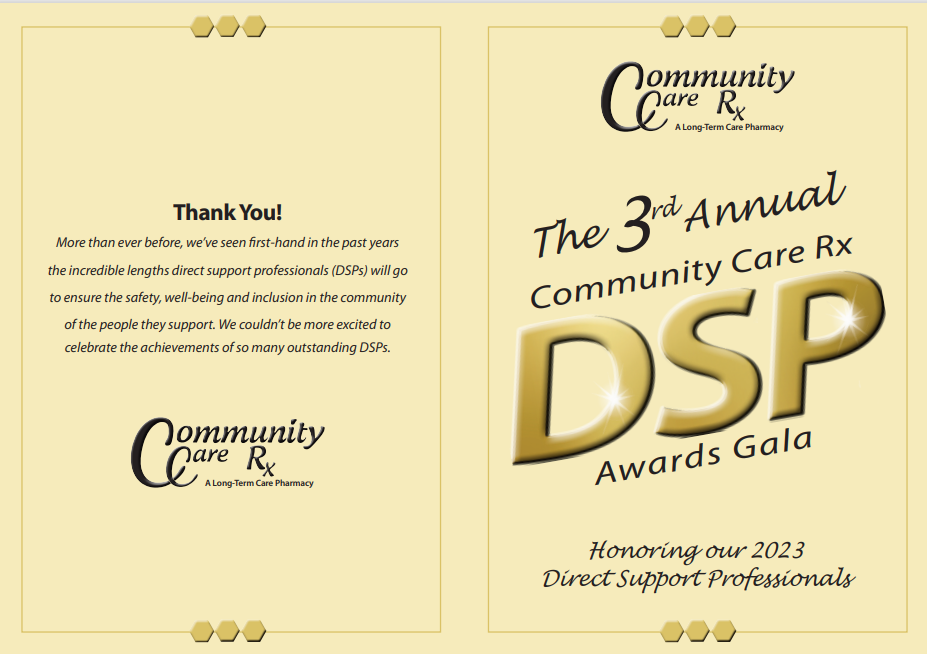Celebrating Direct Support Professionals: DSP Recognition Week 2023
Hire employees with disabilities
Content
Now more than ever, small businesses are finding it challenging to hire talented workers. Hiring disabled individuals can help businesses meet their talent needs while strengthening their competitive edge. By hiring individuals with disabilities, businesses can:
- Expand their pool of talent
- Create a culture of diversity
- Meet their workforce needs
- Foster creative business solutions
- Generate goodwill among customers
A disability is considered a physical or mental impairment that substantially limits one or more major life activity. Individuals with disabilities often need workplace accommodations—a modification or adjustment to a job, the work environment, or the way things are usually done during the hiring process.
Small businesses benefit when they value and appreciate each person for their individual differences and experiences. By investing in recruiting, hiring, and retaining talent—including people with disabilities—businesses can give themselves a competitive edge and demonstrate their commitment to inclusion.
Create a culture of inclusivity
Creating an inclusive culture isn’t hard, but it does take some planning and commitment. The following guidelines are a starting point to assist you with common recruiting and workplace issues. For detailed information on creating an inclusive culture, check out the Inclusion@Work framework from the Employer Assistance and Resource Network on Disability Inclusion (EARN). EARN is funded by the U.S. Department of Labor (DOL).
Write an inclusive job posting
The first step in this process is to write a good job description. The job description should be used to delineate tasks, duties, and expectations for both the employer and the employee.
An inclusive job description should define expectations and identify potential accommodations that can enable employees to perform their job successfully and benefit all job seekers. EARN offers a guide to writing an inclusive job description.
Find qualified talent
The goal of the recruitment process is to attract and identify individuals who have the best mix of skills and attributes for the job available. Ensuring that all qualified individuals—including those with disabilities—can take part in the process is essential to achieving this goal. It is important to know where to look to find candidates with disabilities beyond the traditional recruiting processes. Companies interested in hiring employees with disabilities should begin by:
- Reaching out to the local Workforce Development Board (WDB). WDBs are part of the Public Workforce System, a network of federal, state, and local offices that connect companies to the resources they need to strengthen their business and their workforce, including skilled employees with disabilities.
- Connecting with a Business Services Representative at a local American Job Center. They provide assistance with recruiting, hiring or training employees, including people with disabilities who are ready and willing to work.
- EARN offers a list of online job posting boards that can help small businesses find qualified workers with disabilities.
Customize your employee search
Customized employment strategies help small businesses identify low-cost, low-tech methods for improving labor effectiveness and task distribution to assure a mutually rewarding employment partnership. These strategies aid in recruiting workers with disabilities who are well-situated based on their skills, talents, and experiences to meet the specific needs unique to a small business.
The U.S. Department of Labor’s Office on Disability Employment Policy has developed significant resources, videos, and research to support employers in implementing customized employment strategies within their recruitment and hiring processes.
Partner with advocacy groups and workforce development organizations
Expand your reach by partnering with groups such as:
- State Vocational Rehabilitation (VR) agencies, who provide a wide range of services to help people with disabilities train for, find, and keep jobs that fit their skills and interests. They can also connect businesses with skilled workers with disabilities in their area. For more information, contact your state VR agency.
- Your state’s Governor’s Committee on Employment of People with Disabilities. These state offices work to increase employment opportunities for people with disabilities and to promote public awareness of the needs and abilities of people with disabilities.
- Your local Center for Independent Living (CIL). These organizations promote independent living and equal access for people of all ages with all types of disabilities. They often work with local employers interested in hiring qualified workers with disabilities.
- State Apprenticeship Agencies help connect jobseekers looking to learn new skills with employers and sponsors looking for qualified workers. Apprenticeships help develop a workforce that has industry-driven training and give employers a competitive edge. They can also help increase workforce inclusion. Watch the #ApprenticeshipWorks video to learn more about these benefits.
- The Social Security Administration’s Ticket to Work (TTW) program can connect employers with Employment Networks that help businesses find qualified job applicants with disabilities.
- A local college or university’s Office of Disability Student Services. They may be able to connect you to students with disabilities pursuing various fields of study who are interested in internships or employment opportunities with a business like yours.
Cultivating relationships with these organizations is a good way to gain visibility and will grant you better access to the talent pool of people with disabilities.
Know the guidelines on interviewing
When interviewing candidates with disabilities, employers must follow certain guidelines. For example, there are certain questions you may not ask job applicants regarding their disabilities or medical conditions.
To learn how to conduct such interviews, read the U.S. Equal Employment Opportunity Commission guide, “Questions and Answers: Enforcement Guidance on Disability-Related Inquiries and Medical Examinations of Employees under the Americans with Disabilities Act.”
Need help? Get free business counseling
Reasonable job accommodations
What matters is an employee’s abilities, not his or her disabilities. Job accommodations help employees with disabilities perform certain tasks that are essential for them to do their job.
The Americans with Disabilities Act (ADA) considers an accommodation to be “any modification or adjustment to a job or work environment that enables a qualified person with a disability to apply for or perform a job.”
Job accommodations can include:
- Screen reading software for employees who have low vision,
- Raised desks for employees who use wheelchairs,
- Job coaching for employees with intellectual disabilities,
- Workplace Personal Assistance Services,
- Working from home (telecommuting)
- Adjustments to work schedules.
For additional information about job accommodations:
- Read the U.S. Equal Employment Opportunity Commission’s Reasonable Accommodations to consider when hiring individuals with a disabilities.
- Visit The Job Accommodation Network (JAN). JAN provides free, expert and confidential guidance to employers about workplace accommodations and disability employment issues, including employment laws and regulations.
Cost of accommodations
Most workplace accommodations don’t cost much. According to the Job Accommodation Network (JAN), half of all job accommodations cost employers nothing. Of those that do have a cost, the typical one-time expenditure is $500—an expense that most employers say pays for itself many times over through reduced insurance and training costs and increased productivity.
Businesses can take advantage of financial incentives to make reasonable accommodations.
Accessible technology
To participate fully in the workforce, individuals with disabilities must be able to access the same information as individuals without disabilities.
Make your workplace technology and information accessible for all employees and jobseekers by ensuring your online job applications, pre-employment tests, resume upload programs and other recruitment tools are accessible. For additional information about accessible technology:
- Read Accessible Technology Action Steps: A Guide for Employers. Developed by Department of Labor-funded Partnership on Employment & Accessible Technology (PEAT), this guide shows you how to review your workplace technology for accessibility.
- Use PEAT’s TechCheck tool to review your technology accessibility practices and find tools to improve them.
- PEAT’s TalentWorks tool helps employers and human resources (HR) professionals make their digital recruiting technologies accessible to all job seekers.
Financial incentives
Financial incentives encourage businesses to hire individuals with disabilities and offset the costs of workplace accommodations.
Federal tax incentives
The main federal tax incentives are:
- The Work Opportunity Tax Credit (WOTC), available for hiring individuals from certain groups who have consistently faced significant barriers to employment.
- The Barrier Removal Deduction, whereby businesses can deduct up to $15,000 for making a facility or public transportation vehicle more accessible.
- The Disabled Access Credit, a non-refundable credit for small businesses that incur expenditures for the purpose of providing access to persons with disabilities.
State tax incentives
There are also state tax credits for employers who hire people with disabilities. Check your state office of tax and revenue for more details.




